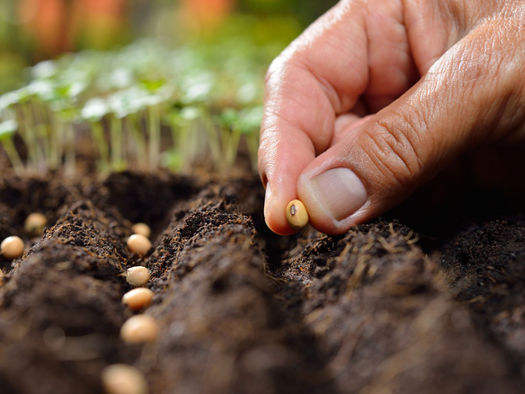
The Jute Process: From seeds to a bag
Jute bags, also known as burlap or hessian bags, are popular eco-friendly bags made from the fibers of the jute plant. These bags are sturdy, durable, and have a lower environmental impact than plastic bags. The process of making jute bags involves several steps, including retting, carding, drawing, spinning, weaving, cutting, stitching, and finishing, all of which are done with an emphasis on minimizing environmental impact.
Scroll down to explore each step of the jute bag making process.
1. Cultivation
Soil preparation:
The soil is prepared by plowing and leveling the land, and adding organic matter like manure and compost to improve the soil fertility.
Sowing:
The jute seeds are sown in the prepared soil during the monsoon season (June to August) and are covered with a thin layer of soil.
Watering:
The jute plants require regular watering, particularly during the initial stages of growth, to ensure proper germination and growth.
Weed control:
Weed control is an important aspect of jute cultivation, as the plants are vulnerable to weed competition during their early stages of growth. Weeding is typically done by hand or using herbicides
2. Harvesting, Selection & Batching
Jute plants are ready for harvesting after 120 to 150 days of sowing, when the plants have reached a height of 8-10 feet. The stems are cut at the base and tied into bundles for transportation to the processing facility.
As jute grown in different areas varies in strength, color and fineness, the first step in preparing the fiber is "batching", consisting of blending the various fibers to obtain uniformity in strength and color to give the precise quality of yarn for spinning. This involves the opening of various qualities of bales. These are then examined, sorted and mixed to form various batches.

3. Retting
In the first mechanical operation in the mill, the jute is fed into a softener in which the jute, treated with an emulsion oil and water, passes between sets of heavy spiral fluted rollers. This process renders the fiber thoroughly pliant and removes any barky portions adhering to the fiber. The piled jute is cut in order to remove the roots.
4. Carding & Drawing
After retting, the fibers are then carded in machines, known as breaker cards and finisher cards, which reduces the average length of the fibers by teasing and combing, resulting in the formation of long continuous ribbons, 5" or 6" in width, called sliver.
The carded jute is next fed into drawing machines in three stages through the first, second and third drawing frames which draw out and attenuate the sliver, parallelize the fibres, and by means of a doubling process, produce a smoother, more even sliver.
5. Spinning
The dried fibers are spun into yarn using a spinning wheel or a mechanical spinner.
This is the last operation in the preparing department is, a process which imparts a slight twist to the sliver and delivers the material on to bobbins in the form of rove, a loose yarn ready for spinning. The spinning machinery known as sliver spinning, an extra drawing operation delivers a crimped sliver, which can be fed direct to the sliver spinning form. Spinning frames convert the rove to finished yarn.
6. Weaving & Prepping
Weaving:
Jute fabrics are of simple construction and are woven on a variety of looms. Woven fabrics are inspected, damped and calendared to produce the desired smoothness of finish.
Cutting and stitching:
The woven cloth is then folded in the desired length, packed in bales by hydraulic press, covered with gunny cloth for protection and stored in godowns (warehouses) to await shipment. Where jute goods are sold in the form of bags, the woven cloth is cut to the required size and then hemmed, sewn and hand stitched. These bags are folded and packed in bales. All such goods are then stored in the finished goods godown and are dispatched as per the delivery schedule.
7. Printing & Finishing
The bags can be printed with designs or logos using screen printing or digital printing techniques. Finally, the bags are finished with a waterproof coating or lamination to make them more durable.














